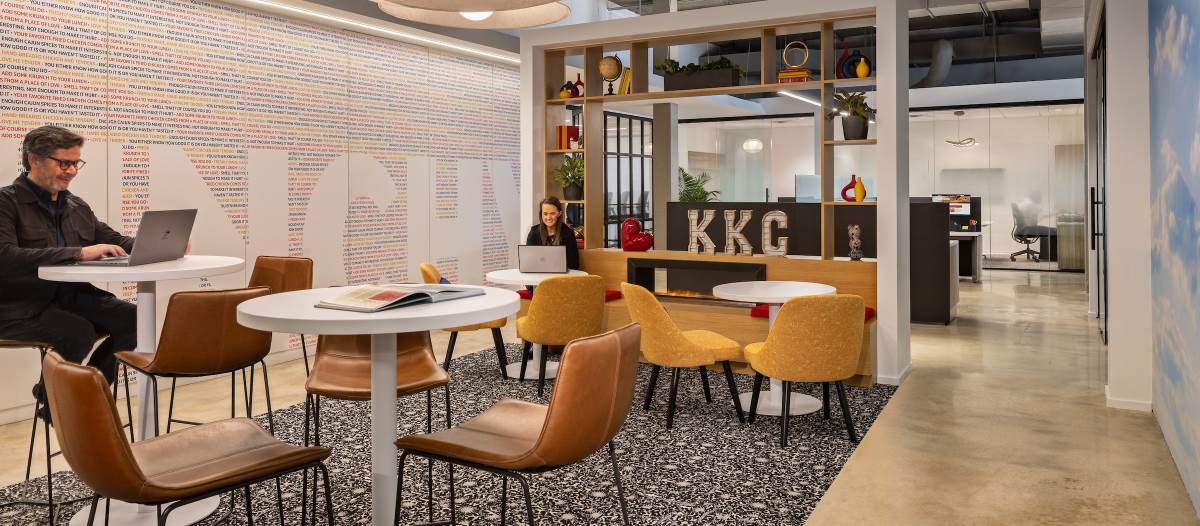Measurable Results
Transforming spaces through occupancy-based setbacks

Commercial building owners face mounting pressure to transform their buildings into intelligent, adaptable spaces. As operational costs climb and sustainability demands intensify, the pursuit of energy efficiency and occupant satisfaction has become paramount for ensuring strong returns on investment.
The technology exists today to directly address both sustainability and energy efficiency in buildings, especially office spaces. Research now demonstrates how the strategic deployment of these assets can provide energy and cost savings over the short and long term.
Driving net zero ambitions
Occupancy setbacks represent a transformative approach to achieving both energy conservation and carbon reduction while enhancing the comfort of building occupants. This strategy aligns seamlessly with the broader carbon-neutral aspirations of modern office environments. As a type of energy conservation measure (ECM), occupancy-based setbacks involve strategically adjusting building systems — heating, cooling, ventilation and lighting — during periods of minimal or zero occupancy. Recent research highlights the tangible benefits facility managers can achieve by adopting this approach.
The evolution of building technology
Contemporary office buildings must provide cutting-edge workspaces while meeting rigorous sustainability requirements in both construction and day-to-day operations. Property managers continually balance regulatory compliance with cost-cutting initiatives and the creation of healthier environments as they navigate evolving commercial real estate demands.
Additional research conducted in London demonstrated that occupancy-driven room conditioning can dramatically improve energy efficiency and cut carbon output. Focusing on meeting rooms, the research found that occupancy setbacks led to a 22 percent reduction in operational energy use and emissions on average, maintaining high indoor air quality (IAQ) and occupant health.
To support sustainability objectives, buildings require sophisticated smart technology infrastructure. This includes advanced building management systems (BMS) integrated with comprehensive sensor networks designed to adapt to usage patterns and environmental conditions. This technology works synergistically with ECMs to optimize performance outcomes.
By connecting sensors to both the BMS and reservation systems, spaces become dynamically responsive, automatically adjusting environmental conditions before scheduled meetings to maximize comfort.
Occupancy setbacks in action
With occupancy setbacks, rooms maintain energy efficiency even during business hours as conditioning shifts from schedule-based to demand-based. This approach conserves energy while extending equipment lifespan by tailoring system operations to real-time sensor data on IAQ, occupancy status and reservation schedules.
The research highlighted significant impacts from contextual and timing factors in setback implementation. For example, the studied rooms were programmed to modify temperature setpoints across a 7-degree range based on occupancy status. During winter, temperatures would decrease to 18 C (65 F) when unoccupied and increase to 22 C (72 F) when occupied. Lighting similarly was adjusted based on occupancy status. According to building policy, rooms were considered occupied only with formal reservations in the booking system, which enabled preconditioning before meetings. When reservation holders or attendees failed to appear, rooms automatically reverted to their unoccupied settings.
IAQ & occupant health
Occupancy setbacks are highly beneficial to the optimization of IAQ, ensuring adequate fresh air intake and air flow within the building. This not only supports cognitive function, comfort and long-term health for occupants, but also enhances their overall performance and satisfaction, making it an ongoing priority for building owners to optimize IAQ assets while promoting healthier environments.
In the study, CO2 levels consistently remained below 1,000 ppm — in line with ASHRAE standards — as the BMS increased fresh air supply during meetings. Humidity levels stayed within the optimal 30–50 percent range throughout winter, preventing issues like condensation or dryness.
Volatile organic compound (VOC) concentrations stayed under 250 PPB, and any temporary spikes were quickly addressed by the BMS increasing ventilation.
Long-term profitability
Installing advanced sensors to enable setback strategies in meeting rooms can deliver impressive returns on investment.
The analysis weighed the higher upfront costs of these sensors — including both equipment and installation — with the long-term energy savings they deliver, using a baseline of standard room thermostats with limited capabilities. The evaluation was conducted using commercial electricity rates in London (measured in pence per kWh), and seasonal fluctuations were considered to provide a normalized estimate of energy savings.
The payback calculation was intentionally conservative, considering only savings from room-level systems (like fan coil units, plug loads and lighting) and excluding potential gains from larger HVAC infrastructure like air handling units and variable air volume (VAV) systems, which could further reduce the payback period. Based on the study, the anticipated payback period for the evaluated rooms was estimated at around two years.
Looking ahead
For buildings leaders, these findings present a compelling case for prioritizing smart building technologies and ECMs like occupancy setbacks. The study demonstrated an average 22 percent reduction in operational energy use and carbon emissions in the examined spaces.
These insights are particularly valuable for decision-makers seeking to maximize building investment returns amid escalating energy costs and increasingly stringent ESG requirements.
Occupancy setbacks represent more than a technical upgrade — they are a strategic approach to operational excellence. By integrating real-time occupancy data with automated building controls, commercial properties can enhance occupant wellness, extend equipment longevity and accelerate progress toward sustainability goals while delivering measurable financial benefits.

Sadiq Syed is the senior vice president of digital buildings business at Schneider Electric and at the forefront of pioneering transformation within the building automation sector. His role focuses on delivering solutions that drive sustainability and operational efficiency, for large enterprises and SMB segment across industry segments. He has strategic business unit P&L ownership, including strategic planning and worldwide growth accountability. He has more than 23 years of demonstrated success driving innovation and growth across verticals - healthcare, industrial and building automation. He has strong business management experience across product management, R&D, marketing, sales, supply chain, service operations and inorganic growth plays.
Read more on Workplace or related topics Real Estate Management , Occupant Services and Data strategy and information management
Explore All FMJ Topics









